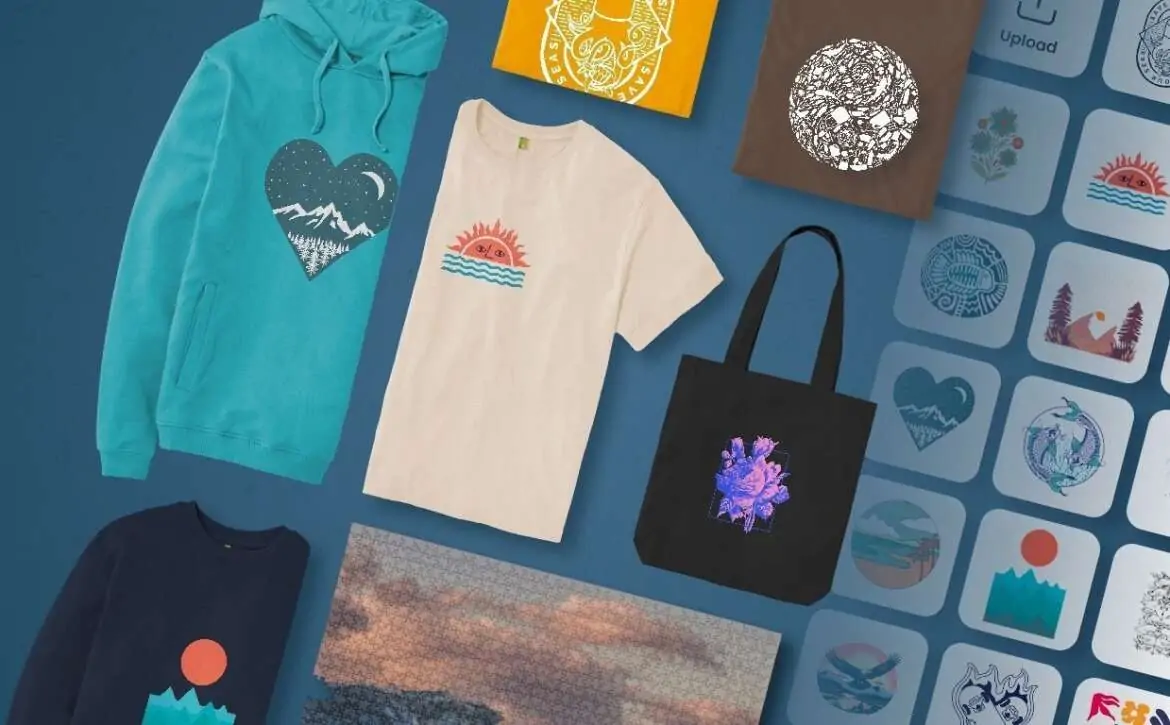Exploring The Art and Impact of Merch Design in Branding
In the dynamic landscape of branding, where the digital and physical realms intersect, merchandise design or merch design stands out as a powerful tool for translating brand identity into tangible experiences. Beyond mere products, merchandise encapsulates the essence of a brand, creating a tangible connection between consumers and the narratives brands wish to convey. As the market continually evolves, the significance of merchandise design in brand strategy becomes increasingly evident. In the words of renowned designer Milton Glaser, “Merchandise is the physical manifestation of the brand. It’s the living, breathing embodiment of what a brand stands for.” The article delves into the intricate world of product design, its role in brand storytelling, and the key considerations designers must consider to create compelling and impactful merchandise.
Brand Identity Extension:
Merchandise serves as a tangible extension of a brand’s identity, allowing consumers to wear, use, and display their connection to a particular brand. A well-executed branding artwork seamlessly incorporates core brand elements such as logos, color schemes, and typography onto various products. This extension is not merely about replication but about embodying the brand’s ethos in a form that consumers can integrate into their daily lives.

Brand Storytelling:
Every brand has a story, and merchandise serves as a dynamic storytelling medium. Through strategic design choices, brands can communicate their history, values, and messages. Each piece of merchandise,
“In a world of constant evolution, collaboration is the heartbeat of innovation. When brands join forces, the resulting merch becomes a canvas where two narratives beautifully collide.”
– John Smith, Creative Director, 2023
becomes a chapter in the brand’s narrative, allowing consumers to wear and share the story in a way that resonates with them on a personal level.
Cohesive Visual Language:
Consistency is key in brand communication, and product design is no exception. The visual language established by a brand should seamlessly carry over to its merchandise. This cohesiveness reinforces brand recognition, creating a unified and memorable brand image across various touchpoints.
Emotional Connection:
Beyond aesthetics, merchandising design aims to evoke emotions and forge a deeper connection with consumers. When done right, merchandise becomes more than a product – it becomes a symbol of shared values and experiences. Consumers don’t just buy into the product; they invest in the emotions associated with the brand.
Limited Editions and Exclusivity:
The scarcity principle is a potent force in consumer behavior. Brands often leverage merch design by releasing limited-edition or exclusive items, creating a sense of urgency and exclusivity. This not only fuels demand but also elevates the perceived value of both the merchandise and the brand itself.

Collaborations and Partnerships:
Collaborations with other brands or artists inject a fresh perspective into designing merchandising products. Such partnerships often result in unique, co-branded merchandise that attracts new audiences while providing existing fans with something novel. Collaborative brand merchandising design is a testament to the brand’s versatility and openness to diverse creative influences.
Strategic Placement:
Designing for merchandise requires a keen understanding of how brand elements integrate with different product forms. The placement of logos, visuals, and messages must be strategic, ensuring each item becomes a cohesive representation of the brand. This attention to detail enhances the overall visual appeal and effectiveness of the merchandise.
Lifestyle Integration:
Successful merchandising design seamlessly integrates into the lifestyle and aspirations of the target audience. Whether it’s apparel, accessories, or lifestyle products, the design should reflect the brand’s ethos in a way that resonates with consumers’ daily lives. Merchandise becomes not just a purchase but an integral part of the consumer’s identity.
“Merchandise is not just clothing or accessories; it’s a canvas where brands paint their identity. It’s the bridge between the digital persona and the physical world, making the brand truly tangible.”
– Jane Doe, Branding Expert, 2023
Quality and Sustainability:
The quality of the merchandise is a reflection of the brand’s commitment to excellence. Beyond aesthetics, consumers value the durability and craftsmanship of the products they purchase. Incorporating sustainable and eco-friendly materials in merch design not only aligns with growing environmental concerns but also caters to the increasing demand for ethical consumerism.
In the evolving landscape of branding, designing merchandising products stands as a dynamic and essential component, bridging the gap between digital presence and physical connection. As brands continue to recognize the potential of merchandise in shaping consumer perceptions, the art of branding will undoubtedly evolve. In the words of fashion icon Karl Lagerfeld,
“Fashion and merchandising are about selling an idea, a dream, and a lifestyle.”
Merchandise, when thoughtfully designed, goes beyond being a simple transaction; it becomes a medium through which brands sell their stories, connect with emotions, and become an integral part of consumers’ lives. The future of merch design promises even deeper connections, innovative collaborations, and sustainable practices, making it a pivotal force in the ever-expanding realm of brand communication.


